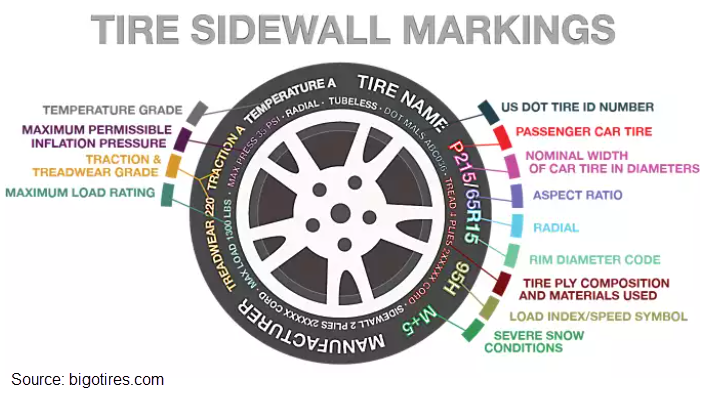
Quebec Winter Tire Switch: Is That Winter Tire Doing More Harm Than Good? The good news: Quebec’s official winter tire deadline has passed. But before you rush to your garage for a tire switch, ask yourself: Is your car really ready for spring tires?
Every year, Montreal drivers face the same dilemma. The legal requirement for winter tires ends, yet Mother Nature hasn’t quite made up her mind about the season. One day it’s a balmy 12°C, the next morning you’re scraping frost off your windshield. This temperature tango can make choosing the right moment for your tire switch feel like a high-stakes gamble.
Here’s the reality: switching too early isn’t just about comfort or performance – it’s about safety. Last year alone, CAA-Quebec reported a 23% increase in spring tire-related service calls, many from drivers who jumped the gun on their tire switch, only to face unexpected late-season snow or dangerous early-morning ice.
But keeping your winter tires on too long isn’t the answer either. Once temperatures consistently stay above 7°C, those same winter tires that kept you safe all season start to work against you:
- They wear out faster on warm pavement
- They increase your stopping distance
- They burn more fuel
- They can actually reduce your traction in spring rain
So when is the right time to make the switch? The answer isn’t as simple as watching the calendar or waiting for the snow to melt. It’s about understanding a complex mix of factors – from temperature patterns to road conditions, from your daily driving routine to the specific needs of your vehicle.
In this comprehensive guide, we’ll help you navigate the transition from winter to summer or all-season tires with confidence. We’ll cover everything from precise timing indicators to storage solutions, and share expert insights that go beyond the usual “wait for 7°C” rule of thumb.
Whether you’re a first-time car owner or a seasoned driver, understanding these crucial factors will help you make the right decision for your vehicle – and keep you safe during one of Quebec’s most challenging driving seasons.
Let’s dive into what really matters when timing your spring tire switch…
Timing Your Winter Tire Switch: Beyond the 7°C Rule
When it comes to switching from winter to spring tires in Quebec, timing isn’t just everything – it’s the difference between optimal safety and unnecessary risk. While the law no longer requires winter tires after March 15, Mother Nature rarely follows legal calendars. Let’s break down the key factors that should influence your decision.
The Science Behind the Switch
That magic number you keep hearing – 7°C (45°F) – isn’t just a random guideline. It’s rooted in tire chemistry and years of safety research. Winter tires are engineered with special rubber compounds that maintain flexibility in cold temperatures, allowing them to grip snow and ice effectively. However, these same compounds become problematic when temperatures rise consistently above 7°C.
Think of it like wearing your winter boots in spring – they’re too warm, uncomfortable, and not optimized for rainy conditions. Similarly, winter tires running on warm pavement become too soft, leading to accelerated tread wear, reduced fuel efficiency, and surprisingly, compromised handling.
Before making the switch, consider these essential temperature patterns:
- Seven consecutive days of temperatures above 7°C during your driving hours
- Nighttime temperatures consistently staying above 0°C
- No freezing precipitation in the 14-day forecast
Reading Your Roads
Quebec’s spring brings unique challenges that go beyond temperature readings. The notorious freeze-thaw cycle creates conditions that even the most experienced drivers need to navigate carefully. Pay attention to your regular routes – especially during early morning drives when temperatures are lowest. That seemingly clear highway might still harbor icy patches in shaded areas or on overpasses.
Pothole season adds another layer of complexity to your tire switch timing. Winter tires, with their softer compound and deeper treads, can actually provide better protection against pothole damage. Before switching to your all-seasons, take a good look at your regular routes. Are road crews actively repairing winter damage? Have your usual shortcuts become obstacle courses of crater-like potholes?
Local Conditions Matter
Living in Quebec means understanding your local microclimate. Montreal Island residents often enjoy earlier safe switch dates than their off-island neighbors. If your daily commute takes you through varying elevations or across the river, you might need to be more conservative with your timing. A sunny 12°C day downtown Montreal doesn’t necessarily reflect conditions in the Laurentians or even the South Shore.
Create Your Personal Winter Tire Switch Strategy
Rather than relying on general guidelines, develop a strategy based on your specific situation. Monitor daily temperatures for two weeks, paying special attention to the hours when you typically drive. Consider where you park – an indoor garage offers different conditions than street parking. Most importantly, don’t rush the decision.
When you’re ready to make the switch, schedule an appointment with your garage for a complete spring tire change and inspection. A professional can:
- Assess your winter tires’ condition for next season
- Check alignment after months of winter drivin
- Ensure proper tire pressure for spring conditions
- Inspect for any winter-related damage
Remember, the cost of waiting an extra week with winter tires is negligible compared to the risks of switching too early. When in doubt, err on the side of caution. Spring in Quebec is a season of surprises, and it’s better to be over-prepared than caught off guard by that last unexpected snowfall.
Storing Your Winter Tires: The Million-Dollar Investment You’re Keeping in Your Garage
Your winter tires represent a significant investment – often upwards of $1,000 for a quality set. Yet many Quebec drivers unknowingly damage these valuable assets through improper storage. Proper storage isn’t just about finding space in your garage; it’s about protecting your investment and ensuring your tires are ready for next winter’s challenges.
Inspection Before Storage: The Critical First Step
Before you even think about storage, take time to assess your winter tires’ condition. Consider this your reconnaissance mission for next winter. Think of it as taking inventory of battle damage after a long campaign against Quebec’s harsh winter conditions.
A thorough inspection should examine:
- Tread depth using the quarter test
- Sidewall condition for cracks or bulges
- Even wear patterns that might indicate alignment issues
- Any damage from winter potholes or curbs
Document any findings with photos. This simple step helps you track wear patterns over time and makes decisions about replacement easier when fall comes around.
The Cleaning Ritual of the Winter Tire Switch
Would you store your expensive winter coat without cleaning it first? Your tires deserve the same consideration. Road salt, grime, and chemical residue can continue to damage your tires even in storage.
Give your tires a proper bath:
- Use warm water and mild soap
- Scrub thoroughly with a tire brush
- Pay special attention to the treads where debris hides
- Dry completely – moisture is the enemy of proper storage
Storage Environment: Location Matters
Your tires’ worst enemies during storage are:
- UV rays that degrade rubber compounds
- Ozone from electrical equipmen
- Heat fluctuations
- Motor oils and solvents
The ideal storage space is cool, dry, and dark. While a climate-controlled garage is perfect, not everyone has this luxury. If you’re storing tires in a typical Quebec basement or garage, keep them away from furnaces, sump pumps, and electric motors – all sources of ozone that can degrade rubber.
The Art of Tire Stacking for Your Winter Tire Switch
Here’s where many well-intentioned DIY storage efforts go wrong. Proper stacking isn’t just about saving space; it’s about preventing tire deformation. For unmounted tires, stack them horizontally like pancakes, never standing. If your tires are still mounted on rims, store them hanging on hooks or standing – never stacked.
Professional Storage: When to Consider It
More Quebec drivers are discovering the convenience of professional tire storage services. Beyond just storing your tires, these services often include:
- Professional cleaning and inspection
- Controlled environment storage
- Insurance coverage
- Seasonal rotation service
While this service comes at a cost, consider the value of:
- Freed up garage space
- Professional handling
- Peace of mind
- Included seasonal services
Make Next Winter Easier: Let AutoTech Take Care of Everything
When you choose AutoTech’s professional tire storage service, we handle all the details:
- We mark and track your tire positions
- Our technicians perform detailed inspection reports
- We maintain all documentation
- We’ll contact you when it’s time for fall installation
Season after season, you get complete peace of mind with our storage facility.
For your winter tire switch in the west island, a good tip: Rely on a recommended CAA garage and use the specialists. To book your all-season tires switch with the experts at Autotech Performance Pierrefonds, schedule a reservation online here.



